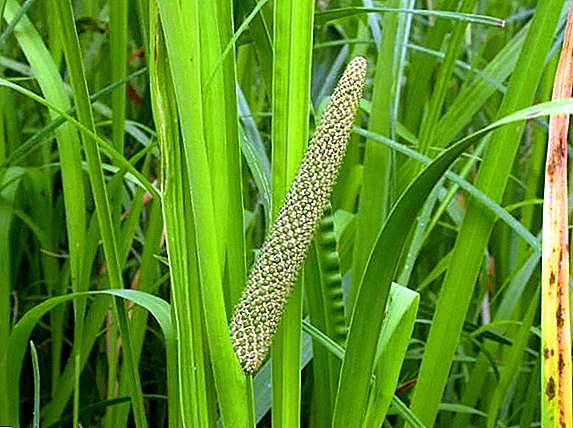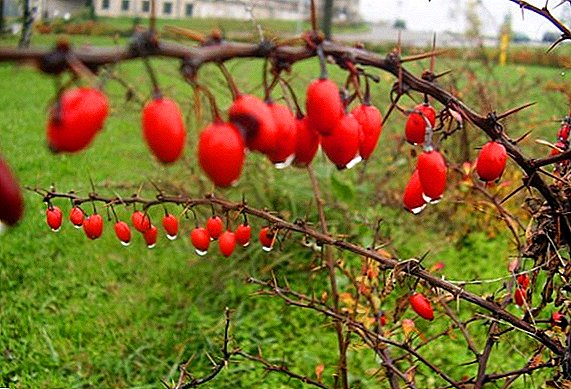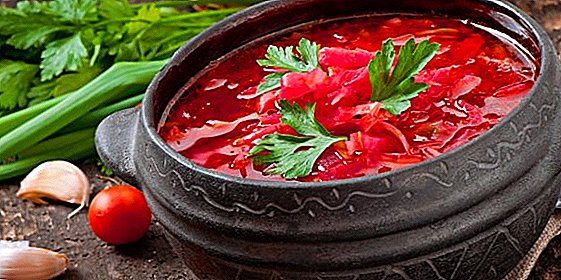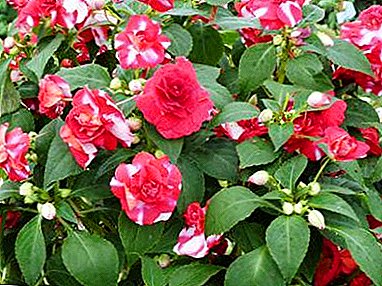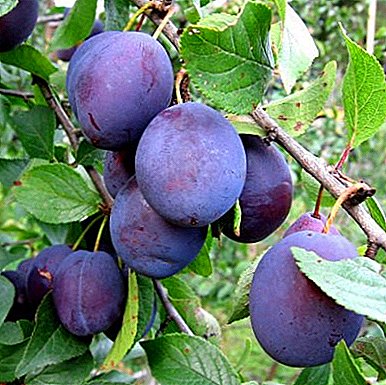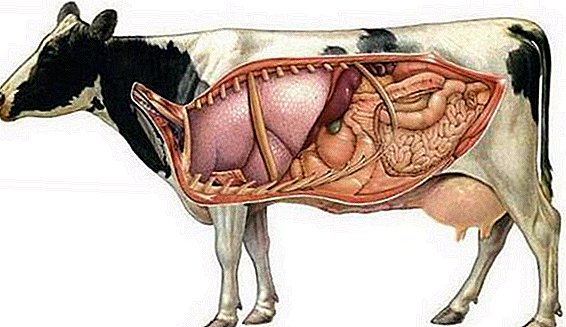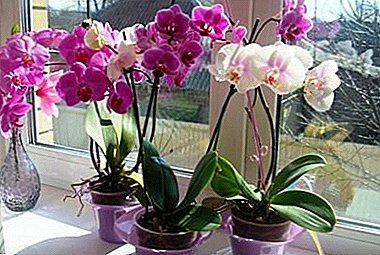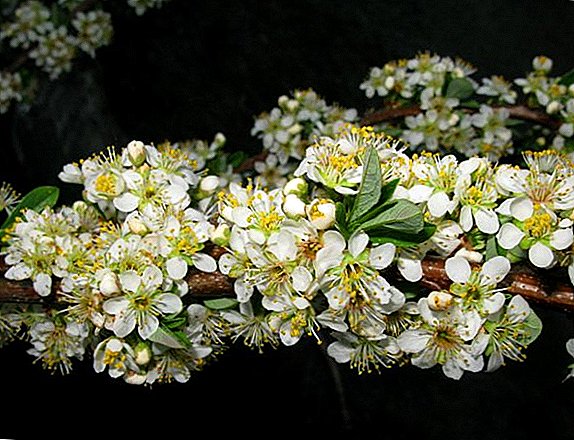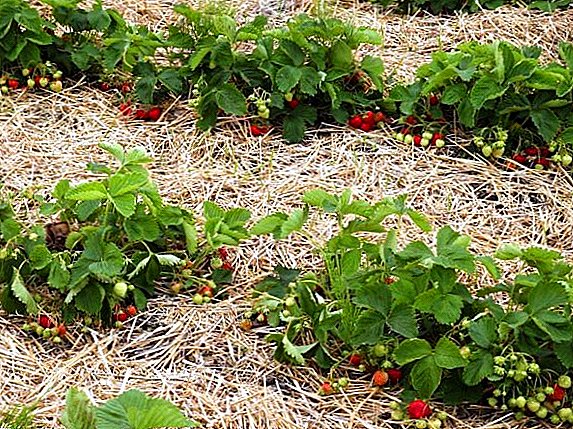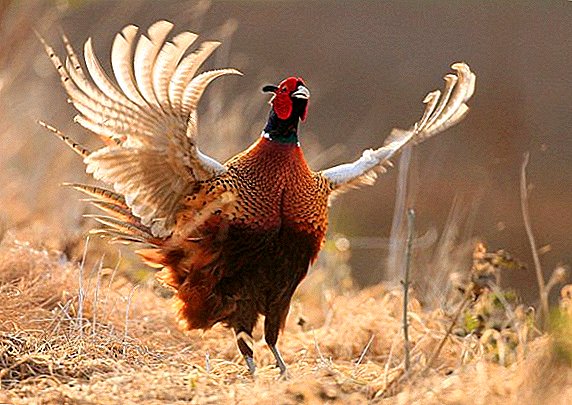 One of the profitable areas of poultry farming is the cultivation of pheasants for meat. For pheasant meat, all the properties of game are characteristic - aroma and saturation, the minimum amount of fat. This extremely juicy meat differs even in the composition of proteins from poultry meat. In order to grow productively, it is necessary to know the technology of keeping and feeding birds.
One of the profitable areas of poultry farming is the cultivation of pheasants for meat. For pheasant meat, all the properties of game are characteristic - aroma and saturation, the minimum amount of fat. This extremely juicy meat differs even in the composition of proteins from poultry meat. In order to grow productively, it is necessary to know the technology of keeping and feeding birds.
Pheasant meat: benefit and harm
This meat belongs to dietary products, its caloric content is 253 kcal. The composition of 100 g of meat:
- proteins - 18 g;
- fat - 20 g;
- carbohydrates - 0.5 g
 Beneficial features:
Beneficial features:- low fat content makes meat a dietary product;
- low percentage of carbohydrates and the absence of cholesterol allow recommending it for those who are struggling with excess weight, as well as for patients with cardiovascular diseases;
- high iron content makes it useful for patients with anemia and pregnant women;
- meat contains more than 20 vitamins and microelements necessary for the body.
You will probably be interested to learn the useful and harmful properties of meat and pheasant eggs, as well as read about how to properly pinch and cut pheasant at home.
Pheasant meat has no harmful properties. But, like any product, it must be carefully introduced into the diet of allergic sufferers, due to the specific, inherent only game, proteins.
Breeding pheasants for meat at home: the pros and cons
Growing pheasants is a highly profitable business, with both advantages and disadvantages.  Benefits:
Benefits:
- low competition;
- the high cost of meat and eggs;
- a large market for products - restaurants, hunting farms, zoos, private grounds.
Disadvantages:
- pheasants require special care, comfortable living conditions and quality nutrition;
- will need a large area for the organization of the enclosure;
- females are bad mothers, they are not suitable for raising chicks;
- males are extremely warlike birds, they will need blinders to prevent fights.
Consider in more detail all the features of breeding pheasants at home.
The best breeds for meat
The wild pheasant living in the wild weighs relatively little. The weight of the male does not exceed 2 kg. In the process of selection were derived breeds with great weight.  Rating of meat productivity of the most popular breeds of pheasants (by weight of males):
Rating of meat productivity of the most popular breeds of pheasants (by weight of males):
- silver - 2-6 kg;
- Romanian - 2.4-2.8 kg;
- white - 2.3-2.7 kg;
- eared - 2.3-2.7 kg;
- lemon - 2 kg;
- hunting - 1.7-2 kg.
- green - 1.6 kg;
- Japanese - 0.9-1.7 kg;
- Nepali - 1.5 kg;
- pheasant pile - 1.5 kg;
- gold - 1.4 kg;
- diamond - 0.9-1.3 kg;
- Caucasian - 0.9-1.3 kg;
- tragopan - 0.9-1.1 kg.
We advise you to get acquainted with the best breeds of pheasants, as well as consider the characteristics of gold, royal, eared and white pheasant.
Pheasants are early maturing birds. At the age of 5 months, they already reach the size and weight of adult birds. Therefore, slaughter for meat is carried out at the age of 4-5 months. Net yield is 70-80%. 
Arrangement of the enclosure
Habitat is required to be as close as possible to the natural conditions of life. In the wild, birds live in the undergrowth and shrubs in the floodplains of rivers. In the bush, they hide from enemies. They rarely fly, but they run well. Natural nests are holes on the ground, in which the female lays up to 20 eggs.
When breeding for meat, birds should live in cages or cages. The pheasant room has a number of features related to how these birds live in the wild.
One of the conditions for the proper maintenance of pheasants is the construction of a suitable aviary. Learn how to make an enclosure for pheasants with your own hands.
For comfortable living birds need:
- space - therefore, at least 2-3 square meters of area should be placed on 1 bird;
- soft covering of the ceiling of the aviary - takeoff can occur almost vertically upwards, so the soft nylon mesh at the top will protect the bird from damage;
- side walls of the enclosure - from a dense mesh with a mesh size of 2.5 cm;
- up to a height of 0.5 m above the floor level, the open-air cage is closed from the sides with a solid sheet of any dense material to prevent fights between males of different enclosures;
- in the aviary there should be a shaded area in which the female with a nest can be located;
- the height of the enclosure is not less than 2.5 m;
- on the floor should be a lot of sand, as well as hay, sawdust;
- necessarily artificial lighting in the aviary for winter time.
 There are tribal and ordinary maintenance of birds. With breeding content, each group of 1 male and several females must live in their own aviary. This period lasts from February to August. For the rest of the time, birds can live in one enclosure with a landing density of 1.5 pheasants per 1 square meter area. So that they do not fight, they wear special blinders on their beaks.
There are tribal and ordinary maintenance of birds. With breeding content, each group of 1 male and several females must live in their own aviary. This period lasts from February to August. For the rest of the time, birds can live in one enclosure with a landing density of 1.5 pheasants per 1 square meter area. So that they do not fight, they wear special blinders on their beaks.In equipping the enclosure must be:
- 2 feeders - for wet and dry food;
- 1 drinking bowl;
- 1 house nest.
Important! If pheasants are grown for meat, females are not allowed to incubate. Firstly, they are bad chicks, and secondly, the bird loses 40% of its weight during brooding.
As well as any devices that will help to realize natural instincts: a tree trunk, so that pheasants can take off somewhere or specialized stands, perches, shrubs. The function of the shrub can well perform small trees from the forest belt. Drinkers and feeders should be under a canopy. 
Care
Floor care in the aviary:
- board surfaces must be treated with a solution of hydrated lime to prevent the development of pathogens;
- if there is nothing except sand on the floor, then under the sand the floor must be tightened with a metal net - this will prevent rodents from entering the aviary;
- the task of the sand is to clean the bird's feathers from parasites; Actually, the sand on the floor performs the same role as the ash bath for chickens. The thickness of the sand layer is at least 20 cm.
- for clay or other floors in the aviary will need to provide a place for a sand bath;
- sand is replaced with a new one as it is polluted.
Did you know? The first to learn about the existence of pheasants were the ancient Greeks. They found these birds in the floodplain of the Phasis River, which gave them a name. According to legend, they were first discovered by the leader of the Argonauts Jason.
Cleaning attachments.
- to make it convenient for the birds to hide, and the female has a place for egg laying, build small houses or huts inside the enclosure;
- wood surfaces are treated with a solution of bleach - this is especially important before nesting begins.
 Feeders, drinkers, inventory:
Feeders, drinkers, inventory:- they are processed at least once a week for a family of pheasants and once every 2-3 days for a common enclosure.
Did you know? All kinds of pheasants - immigrants from China and Central Asia. Now these birds are found everywhere in the wild, and in urban parks and hunting grounds.
Most breeds tolerate frost well and can continue to live in aviaries. Exception - representatives of decorative rocks. Therefore, in the winter they need:
- lighting in the aviary to extend daylight; in the dark the birds sleep, which will adversely affect weight gain;
- for large frosts in the aviary construct a shelter, a place protected from gusts of wind and snow.

Feeding rules
The diet of pheasant has the same basic characteristics as the diet of chickens:
- cereals - 40-50%;
- greenery - 20-30%;
- other feed - 20-40%.
It is known that males are quite aggressive creatures and can arrange fights among themselves. To solve this problem, you can use glasses that are worn on birds.
The power feature is the presence of:
- animal proteins - small rodents, amphibians, insects, larvae;
- fruits and seeds of plants;
- nuts, acorns.
 From grain, birds prefer:
From grain, birds prefer:- peas;
- wheat;
- barley;
- corn;
- millet.
Important! Some species of pheasants are divided into subspecies. For example, silver has 15 subspecies. This factor should be considered when purchasing eggs or young for growing for meat.
Nutrition scheme for adult pheasants:
- summer - 3 times a day with the issuance of soft feed in the morning and grain in other cases;
- in the winter - 2 times a day.
 Approximate diet of pheasants:
Approximate diet of pheasants:| Feed | Daily ration (g) | |
| winter | summer | |
| Cereals | 50 | 45 |
| Juicy (roots, vegetables) | 10 | 20 |
| Animal origin (fish, meat and bone meal, cottage cheese, fish meal) | 6 | 9 |
| Vitamin (yeast) | 3 | 2 |
| Mineral (lime, salt) | 3 | 3 |
 The diet of hunting pheasant is 80 g per day. For meat breeds, feed requires 30-40% more. At the same time the feed should provide a high content of carbohydrates in the diet.
The diet of hunting pheasant is 80 g per day. For meat breeds, feed requires 30-40% more. At the same time the feed should provide a high content of carbohydrates in the diet.It is forbidden to give pheasants:
- products from the diet of people - bread, pastry, cakes, sugar, sausages;
- raw river dwellers - they can be a source of worms;
- mice caught in the farm (despite the fact that pheasants eat them) - mice are carriers of infections and parasites.
Important! A characteristic feature of pheasant chicks is that from the very birth they need food of animal origin, and only then will they need grain feed.
How to water a bird
Water in drinking bowls should always be cool. Daily rate of water - 100-150 g. Because pheasants are very shy, it is better to place a drinker in which you will not need to constantly add water so as not to disturb the birds.  Breeding pheasants is a difficult but doable task that can generate a steady income. Weight gain by birds depends both on the amount of feed, its caloric content, and on the conditions of detention. Providing pets balanced nutrition, the farmer will certainly get good results.
Breeding pheasants is a difficult but doable task that can generate a steady income. Weight gain by birds depends both on the amount of feed, its caloric content, and on the conditions of detention. Providing pets balanced nutrition, the farmer will certainly get good results.


